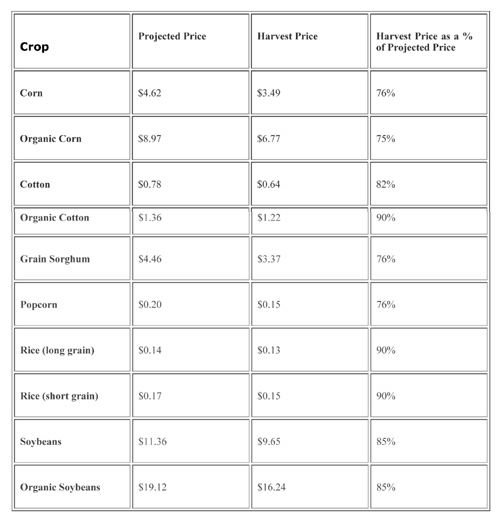2014 Harvest Time Crop Insurance Analysis
DR. RAYMOND E. MASSEY
COLUMBIA, MO.
The USDA Risk Management Agency reported projected harvest prices used. The table below presents the projected price, which was used when signing up for crop insurance and the harvest price which affects Revenue Protection insurance calculations.
Most farmers in Missouri are pleased as their yields come in above their Actual Production History. For farmers who bought Yield Protection, most are not going to get an indemnity. Some isolated farms that had planting or harvesting problems, wet fields, insects or other yield reducing events may get an indemnity due to yield loss. If they do get an indemnity they will be happy to find that their yield shortfall is valued at a higher price than the price they are likely to receive for their crops sold in the spot market.

For farmers who bought Revenue Protection, their high yields are likely to mean they won’t be receiving an indemnity. Revenue Protection insurance pays an indemnity when the guaranteed revenue is greater than the actual revenue. The actual revenue is calculated as their actual harvest times the harvest price reported by the RMA. Yields and/or prices must decline sufficiently to receive an indemnity.
The last column in the table indicates how much prices declined from the spring to the fall. Corn prices declined to 76 percent of springtime projected price; soybean prices declined to 85 percent of projected price. Anytime the harvest price as a percent of projected price is less than a farmer’s chosen coverage level, all the “deductible” due to price has been covered. Any yield reduction from APH results in an insured loss that generates an indemnity. In some cases an insured loss will occur even if the yield is above the farmer’s APH. For example, a corn farmer who purchased 85 percent revenue protection coverage on corn acres would have an insured loss even if their yield was 110 percent of their APH. ∆
DR. RAYMOND E. MASSEY: Extension Professor Agricultural and Applied Economics, University of Missouri